Decoding Naveen Patnaik & his 5Ts for Odisha

Opinion
By Pradeep Kumar Panda
Bhubaneswar, September 7: When Naveen Patnaik took over as Chief Minister in 2000, the state was going through a severe crisis after the 1999 Super Cyclone. The finances of the state were in a mess and there was no money to pay even salaries.
The development activities had come to a complete halt. In those days, Odisha used to be in news for all the wrong reasons like hunger, poverty, disasters.
In the last two decades of Naveen Patnaik government in Odisha, the State has come out of the crisis situation and has been making rapid strides in development and emerged as a role model in many fields.
It was not an easy journey. Naveen Patnaik had to overcome many challenges including a strong legacy of political corruption and administrative lethargy in the state. Large parts of the state face geographical and social-economic hurdles.
Farmer Empowerment scheme called KALIA (which provides financial aid to all types of farmers in the state and Union Government launched PM Kisan Nidhi scheme getting influenced by KALIA scheme) is a case in point.

The government under Naveen Patnaik has made the farmers a priority, with plenty of schemes over the years designed to benefit them.
He focused on the women of Odisha, too, with Mission Shakti schemes for near 80 lakh women, which gave them financial independence to nearly 6.02 lakh self-help groups, thus providing the family with a supplementary source of income.
Gender empowerment model of Naveen is also reflected in the recently concluded Panchayati Raj Election of 2022. Fifty per cent of the seats were reserved for women from Ward to Zilla Parishad level. As a result, 56 per cent women were chosen as village Sarpanch, 57 per cent as PS member, 66 per cent as PS chairperson, 55 per cent as Zilla Parishad Member and 70 per cent as Zilla Parishad President.
Also, Odisha, because of its geography, is prone to cyclones, floods, and even tsunamis. The super cyclone of 1999 killed around 10,000 people.
Soon after coming to power, the government set up the Odisha State Disaster Management Authority. Its effectiveness has been evident over the years, with the UN felicitating Naveen Patnaik in 2013 for the state government’s handling of the cyclone Phailin.

When cyclone Fani devastated the state in the first week of May this year, more than a million people were evacuated in 24 hours and relocated to cyclone shelters, thus minimizing casualties. Year on Year, zero casuality mission was achieved in every natural disaster.
He made Bhubaneswar, the sports capital of the country and arranged many coveted international tournaments that were well appreciated by international and national fraternity.
Odisha’s patronage to hockey in terms of all round support and sponsoring of both Men and Women National Hockey Team since 2018 and state will continue the sponsorship for next ten year. Result we have witnessed in terms of Olympic Hockey Medals. World’s largest hockey stadium is being built in Rourkela and will host World Cup Hockey in 2023 along with Kalinga Stadium, Bhubaneswar.
Odisha is one of the fastest-growing states in the Country and is expected to grow at 10.1 per cent in 2021-22 which is higher than National growth rate of 8.8 per cent.
Industry sector is expected to grow strongly by 14.5 per cent largely due to the stellar performance of manufacturing and mining and quarrying sub-sectors which grew at 14.3 per cent and 18.1 per cent respectively. Services sector is estimated to grow by 7.9 per cent in 2021-22.
The share of Agriculture & Allied in GSVA is 20.06 per cent, Industry Sector share is 39.5 per cent and share of service sector is 39.9 per cent.
Per capita income has grown significantly at 16.8 per cent in 2021-22, to reach Rs 1,27,383 from 1,09,071 in 2020-21.
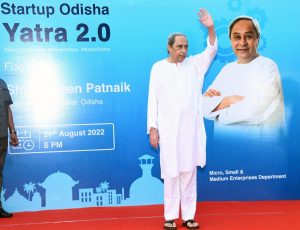
Patnaik is also credited with bringing large-scale industrialization to the state, which was, before 1997, mostly agricultural. Odisha is awarded first prize for MSME promotion in the country by Government of India. Similarly Odisha bagged first prize in Mineral Development in the country. Recently Odisha Government has launched IT Policy 2022 which will make the state a global IT Hub.
Odisha’s sound fiscal management is widely appreciated by the Reserve Bank of India, the International Monetary Fund and the World Bank.
Odisha has one of the lowest Debt to Gross State Domestic Product (GSDP) ratio in the country. Since inception of Fiscal Responsibility and Budget Management (FRBM) Act in 2003, Odisha has never violated FRBM norms related to Fiscal Deficit, Revenue Deficit, Primary Deficit and Debt to GSDP ratio.
The size of Odisha Budget saw thousand times increase from Rs. 3282 crore in 2000-01 to Rs. 2 Lakh crore in 2022-2023.
Odisha is first state in the country to release Agriculture Budget, Gender Budget, Child Budget, Nutrition Budget, Climate Budget, SDG Budget and Mission Shakti Budget.

With sustained revenue collection and better expenditure management, the state has consistently reported a revenue surplus and maintained fiscal deficit within the FRBM Act mandated level of 3.5 per cent of GSDP.
The high share of developmental expenditures at 72.7 per cent (2021-22 BE) in total expenditure is a positive indicator and shows state’s commitment towards overall socio-economic development.
Bhubaneshwar, one of the two ‘smart cities’ in Odisha secured the fourth rank among the top ten capital cities in India, in the ease of living index, 2021, released by the Ministry of Housing and Urban Affairs.
In 2021, Puri became the first city in the country, to provide ‘Drink from Tap’ facility under the SUJAL mission of the government. It is also targeted to provide similar facility to all other Urban Local Bodies by 2025. Under the BASUDHA, the state is also providing universal coverage of piped drinking water supply to all rural people. The state has targeted to provide safe drinking water in all villages by 2024-25.
Health expenditure as percentage of GSDP in the state has increased from 1.19 per cent in 2019-20 to 1.59 per cent in 2021-22.

The NNMR, IMR and U5MR are continuously declining which indicates the improved health outcome in the State. As per NFHS-5 (2019-21) the prevalence of NNMR stood at 27, IMR at 36.3 and U5MR at 41.1 per 1000 live births declining from 28, 40 and 48 in NFHS-4 (2015-16) respectively.
The state has taken several steps towards full Immunization. As per NFHS-5 (2019-21), Odisha has notably immunized 90.5% of its children aged 12-23 months as against the national average of 76.4 per cent.
He has communicated with his people very well in the past 25 years through a series of welfare measures for all categories of people and all-round development work.
This, along with his clean image, has yet again ensured his imminent return to power for a fifth consecutive term as the chief minister. He has already made a lasting impact and will live in the heart of Odias forever.
Naveen Model of development has provided transformational governance with the aim to build a New Odisha, Empowered Odisha.
The principles of Naveen Patnaik Governance are best explained in the 5Ts – Transparency, Technology, Team Work, Time and Transformation.
( Author is Bhubaneswar-based Economist and currently associated with Planning & Convergence Department, Government of Odisha)

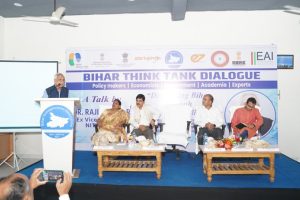
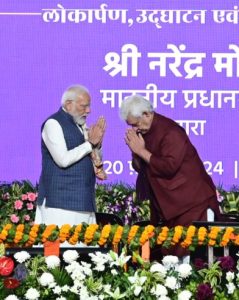

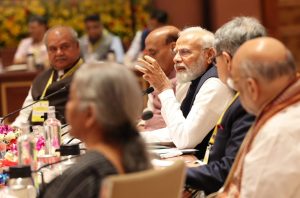

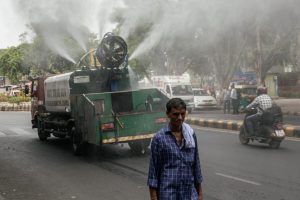
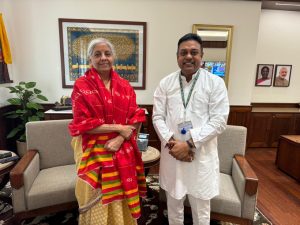

BEST CM Ever